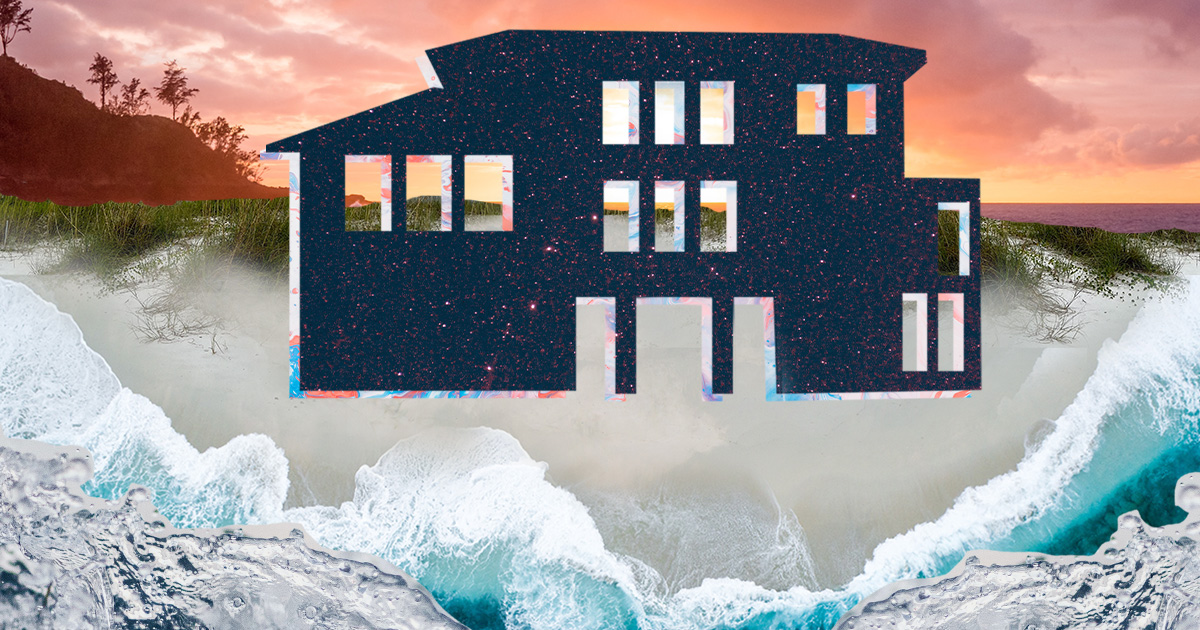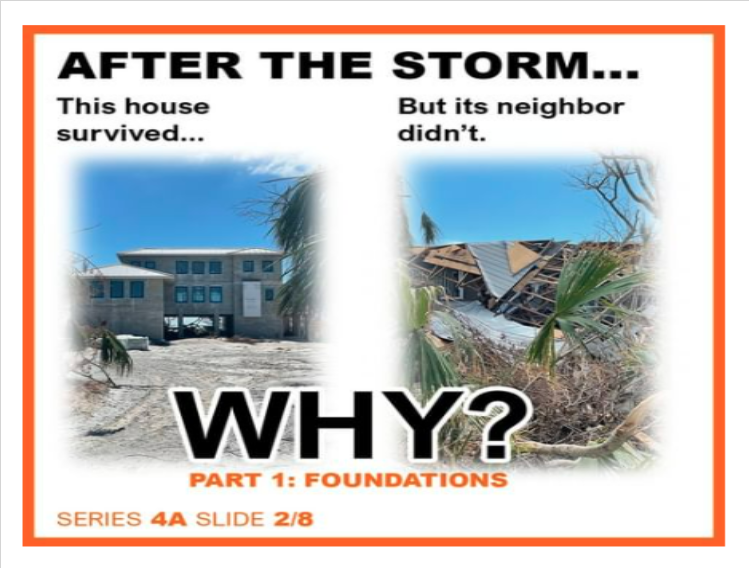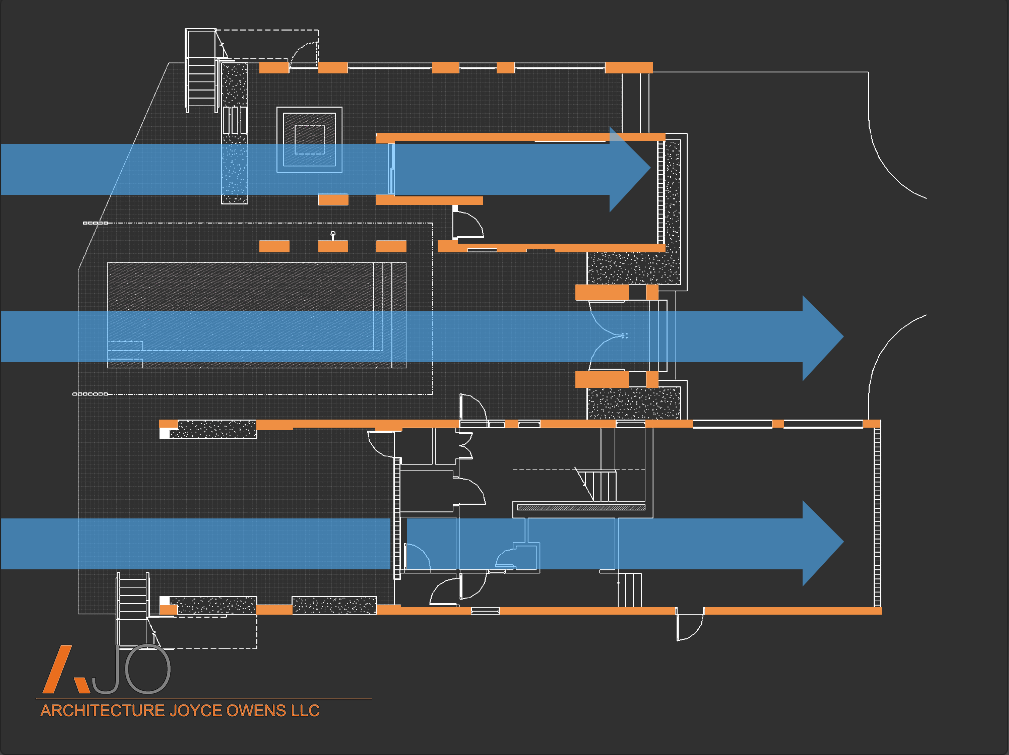

Many coastal clients have homes and businesses that maximize water views and ocean breezes, but as severe weather increases, architects must guide builders to prioritize design aimed at anticipating hazardous weather events. Likewise, policy makers must work to ensure safety and resiliency standards are equitable in all communities.
In December 2022, President Biden signed The Community Disaster Resilience Zones (CDRZ) Act into law. Among its changes, the law establishes classification for communities that are at high-risk of natural disaster and have low community resources. If classified as a CDRZ community, the community will be eligible for additional federal cost-sharing support and technical assistance as it relates to local resilience planning and development. The bill also requires the Federal Emergency Management Agency (FEMA) to maintain and update the National Risk Index, which will be utilized to identify and designate CDRZ communities that are most in need.
Rebuilding. Smarter. Stronger.

Architect Joyce Owens (center) joins colleagues and crew as they work to rebuild Sanibel Island near Ft. Myers, Florida, after Hurricane Ian.
Credit: Joyce Owens
In 2022, Hurricane Ian reached Florida as a Category 5 storm. With more than $113 million in damages, it became Florida’s costliest hurricane as its water and wind swept away buildings, lives, and livelihoods.
Florida-based architect Joyce Owens, FAIA, whose projects withstood the strength of Hurricane Ian’s devastating wind and 100-year storm surge on Sanibel Island, is using the lessons learned from the devastation to educate and advocate for resilient design. Her firm, ARCHITECTURE JOYCE OWENS LLC, is committed to designing for strength and sustainability in Florida’s unique conditions, while helping to lessen the impact of building on the fragile beachfront ecosystems.

Credit: Joyce Owens
Following Hurricane Ian, she reminded her community that paradise was not lost and could be rebuilt to sustain future storms.
To share her knowledge beyond her clients, the 2022 AIA Florida Gold Medal of Honor recipient launched Florida: Rebuilding Smarter Stronger (FL-RSS), an outreach campaign highlighting how coastal construction can withstand devastating weather and sub-tropical climate extremes with architecture design knowledge.
“The message I want to share is not just stronger, but also smarter, and by smarter I refer to understanding how to build [for] Mother Nature,” said Owens.

Source: FL-RSS
“For example, “said Owens, “the foundations that we have designed for the past decade for the coastal structures allow water to flow through the buildings, just as Mother Nature should be allowed to do, thereby limiting damage.”

On a public Instagram account @ajo_flrss, Owens freely shares the building processes she uses that have proven to withstand “Mother Nature”, including case studies on foundations, building, and FEMA guidelines. “For example,” said Owens “the foundations that we have designed for the past decade for the coastal structures allow water to flow through the buildings, just as Mother Nature should be allowed to do, thereby limiting damage.”
Owen’s work and advocacy continue bringing more attention to the value of designing for disaster prevention.
“We have shared our knowledge at speaking engagements and have received local and national media coverage that has reached far beyond our community. There are more speaking opportunities already scheduled for later in the year, including AIA Florida,” said Owens. “We hope that our campaign will continue to grow and help others gain a better understand of building for future storms and climate change.”
AIA Promotes Climate Action
For people and communities who lack the means to hire an architect, the CRDZ law provides financial, technical, and planning support. AIA worked with Members of Congress from both sides of the aisle to advocate for this impactful policy change.
“The law is a key part of AIA’s strategy to promote climate action and equity in the built environment, because often the communities that are impacted the most by climate change lack the resources to rebuild when disasters strike,” said Kara Kempski, Senior Director of Federal Relations and Strategic Alliances at AIA. “For communities to be resilient, we must consider factors that will impact their ability to recover, including social vulnerability and lower financial resources.”
CRDZ creates new opportunities for architects to provide design services to improve community resilience in the regions that historically have been unable to solicit the financial resources necessary for this type of expertise. The first will happen this spring when FEMA releases its list of resilience zones. FEMA has engaged with state, local, tribal, and territorial emergency management partners to identify how the designation of the zones can benefit communities. AIA encourages architects to participate in the public review of the list to guide policy makers as they finalize CDRZ plans.